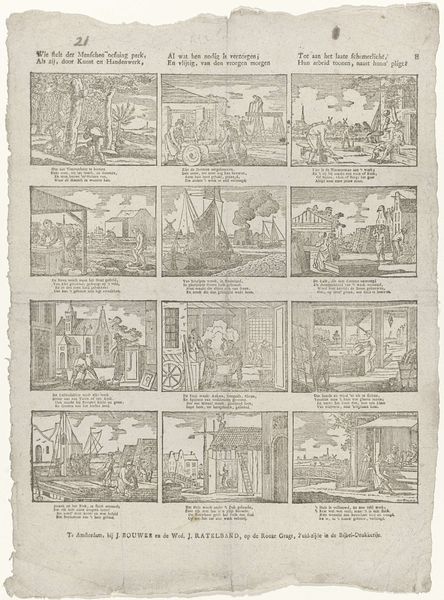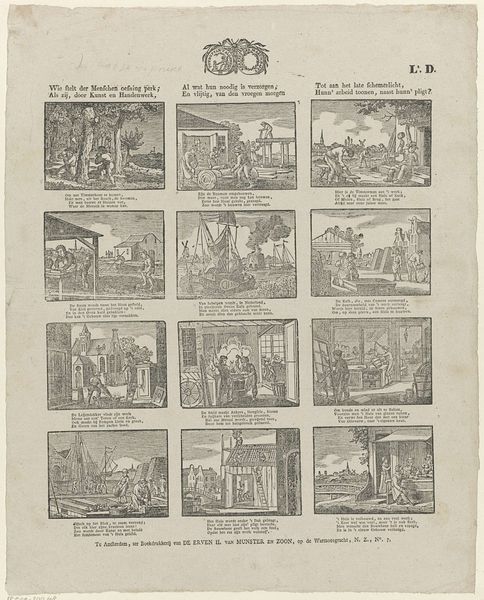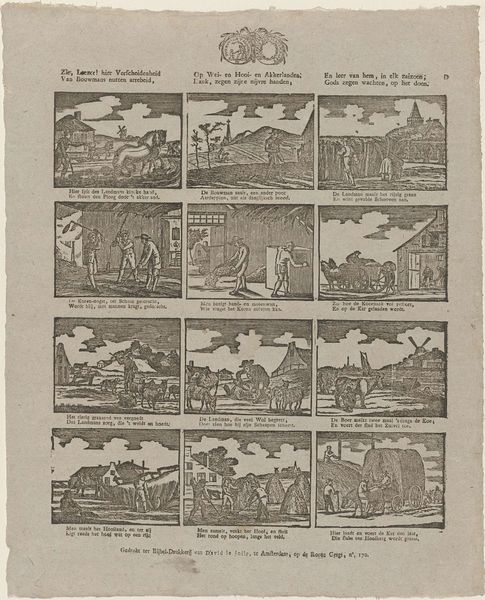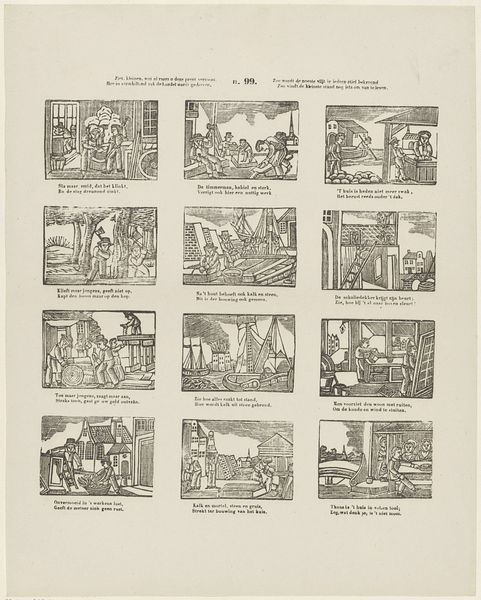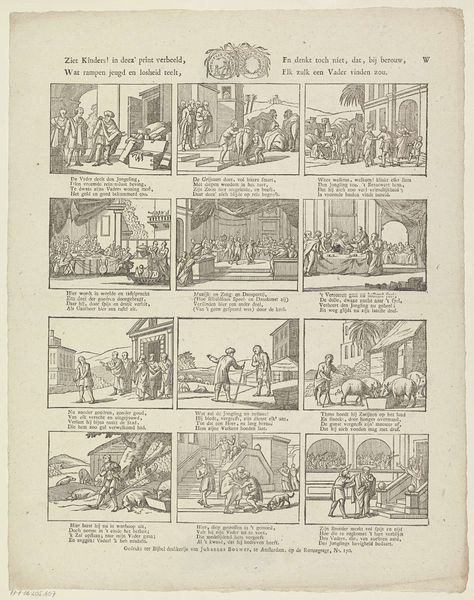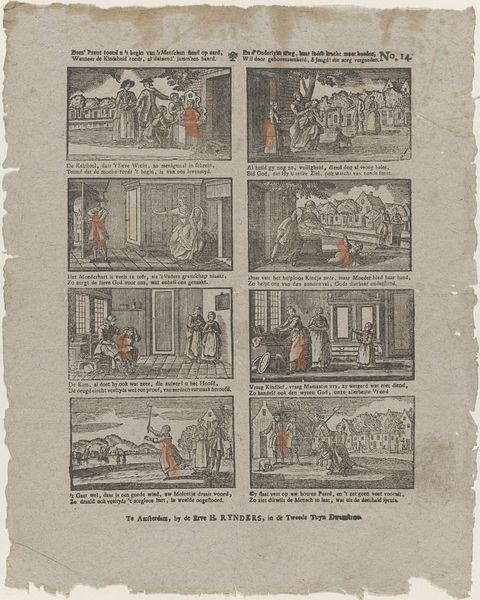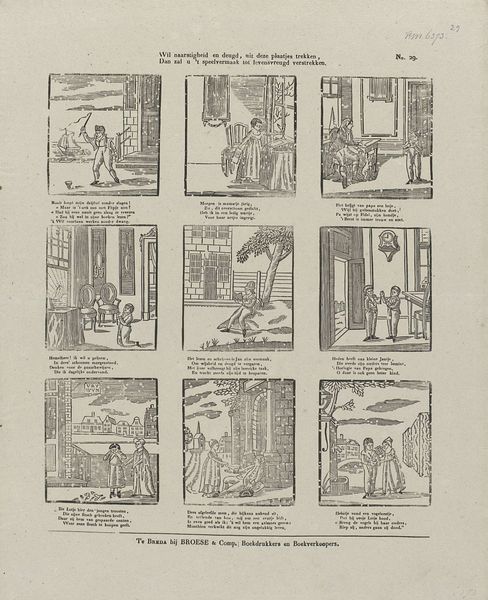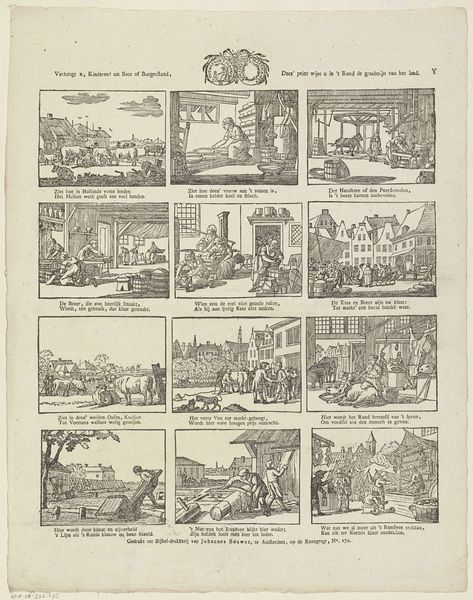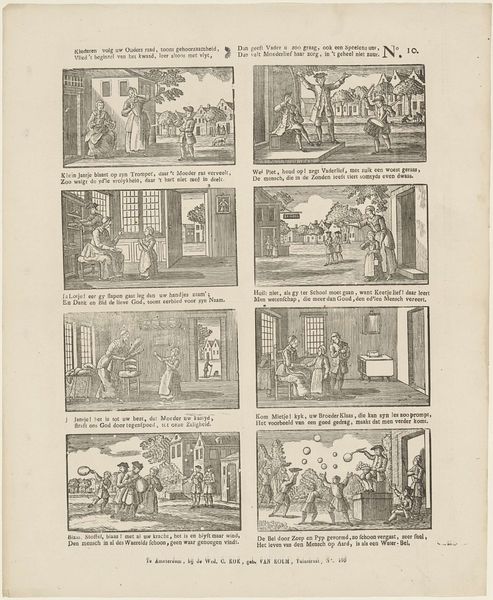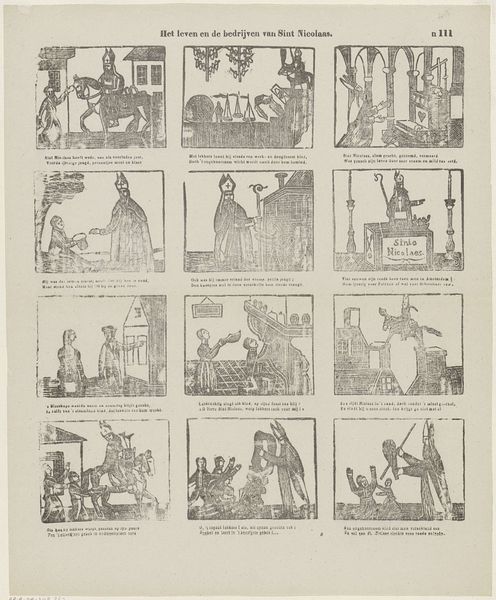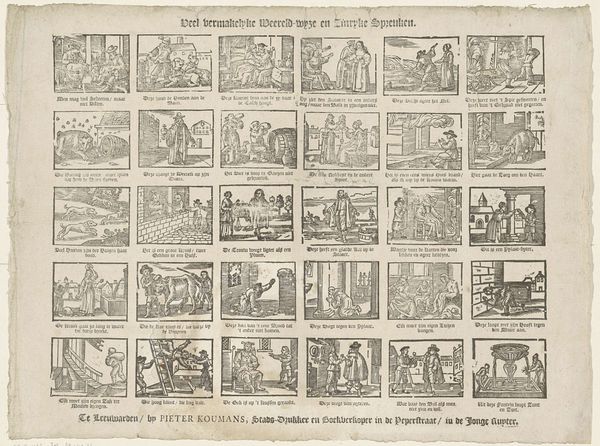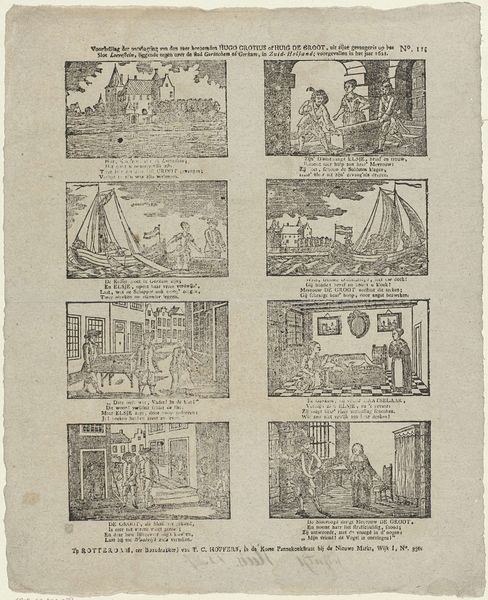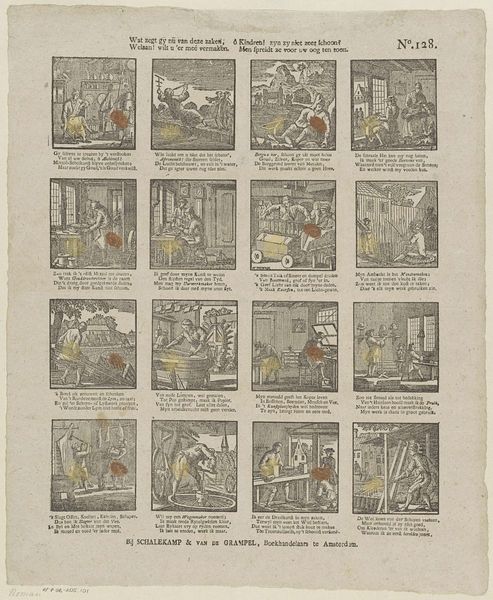![Wie stelt der menschen oefning perk, / Als zij, door kunst en handenwerk [(...)] by Gerrit Oortman](/_next/image?url=https%3A%2F%2Fd2w8kbdekdi1gv.cloudfront.net%2FeyJidWNrZXQiOiAiYXJ0ZXJhLWltYWdlcy1idWNrZXQiLCAia2V5IjogImFydHdvcmtzLzAwYTRhOTk0LTYzNzMtNGIzMy05YTI1LTQ0ZWMzMmVkMzU2OC8wMGE0YTk5NC02MzczLTRiMzMtOWEyNS00NGVjMzJlZDM1NjhfZnVsbC5qcGciLCAiZWRpdHMiOiB7InJlc2l6ZSI6IHsid2lkdGgiOiAxOTIwLCAiaGVpZ2h0IjogMTkyMCwgImZpdCI6ICJpbnNpZGUifX19&w=3840&q=75)
Wie stelt der menschen oefning perk, / Als zij, door kunst en handenwerk [(...)] 1805 - 1808
0:00
0:00
print, etching, paper, ink, engraving
#
narrative-art
#
dutch-golden-age
# print
#
etching
#
paper
#
ink
#
genre-painting
#
engraving
Dimensions: height 410 mm, width 326 mm
Copyright: Rijks Museum: Open Domain
Editor: This print, “Wie stelt der menschen oefning perk, / Als zij, door kunst en handenwerk [(...)]”, was created by Gerrit Oortman sometime between 1805 and 1808. It looks like it combines etching and engraving. I’m struck by how it portrays so many different kinds of labor in these small panels. What can you tell me about how materials and social context speak in this work? Curator: It’s interesting that you picked up on the variety of labors depicted. Considering its material origins, the print served as a mode of disseminating ideals about industriousness and societal function. Each little scene is a vignette of production. Do you notice anything about *what* kind of work is valued here? Editor: Well, looking closer, they all seem pretty ordinary, essential jobs. Farming, building, crafting... It’s like a catalog of the working class. So is the choice of print – a reproducible and widely accessible medium – significant in valorizing these labors? Curator: Absolutely. Print democratizes art. It’s not a unique, precious object for the wealthy. Think about the labour involved in its creation and dissemination. Oortman, the etcher, and the printer. And consider the intended audience - the rising middle class eager for instruction and self-improvement. How does seeing labor represented this way shift our understanding of “art”? Editor: It blurs the lines. We tend to separate art from the everyday work that sustains us. But this print seems to argue that all honest labour, including the making of art, has value. I never considered how the actual printing process contributes to the work’s message! Curator: Exactly! It compels us to acknowledge the materials, processes, and hands involved. We can then analyze how social hierarchies are negotiated through those means. Editor: So interesting to think about how the materiality and mode of production are crucial to interpreting its meaning. Thank you!
Comments
No comments
Be the first to comment and join the conversation on the ultimate creative platform.
